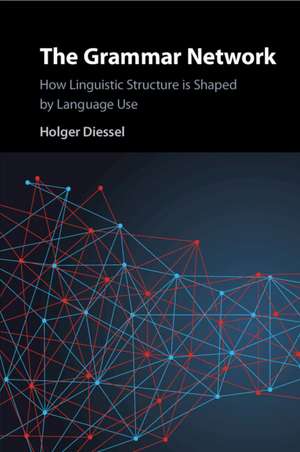The Grammar Network: How Linguistic Structure Is Shaped by Language Use
Autor Holger Diesselen Limba Engleză Paperback – 8 iun 2022
| Toate formatele și edițiile | Preț | Express |
|---|---|---|
| Paperback (1) | 200.24 lei 6-8 săpt. | |
| Cambridge University Press – 8 iun 2022 | 200.24 lei 6-8 săpt. | |
| Hardback (1) | 725.57 lei 6-8 săpt. | |
| Cambridge University Press – 14 aug 2019 | 725.57 lei 6-8 săpt. |
Preț: 200.24 lei
Nou
Puncte Express: 300
Preț estimativ în valută:
38.32€ • 40.97$ • 31.95£
38.32€ • 40.97$ • 31.95£
Carte tipărită la comandă
Livrare economică 17 aprilie-01 mai
Preluare comenzi: 021 569.72.76
Specificații
ISBN-13: 9781108712767
ISBN-10: 1108712762
Pagini: 307
Ilustrații: 87 b/w illus. 19 tables
Dimensiuni: 151 x 228 x 15 mm
Greutate: 0.41 kg
Ediția:Nouă
Editura: Cambridge University Press
Colecția Cambridge University Press
Locul publicării:Cambridge, United Kingdom
ISBN-10: 1108712762
Pagini: 307
Ilustrații: 87 b/w illus. 19 tables
Dimensiuni: 151 x 228 x 15 mm
Greutate: 0.41 kg
Ediția:Nouă
Editura: Cambridge University Press
Colecția Cambridge University Press
Locul publicării:Cambridge, United Kingdom
Cuprins
1. Introduction; Part I. Foundations: 2. Grammar as a network; 3. Cognitive processes and language use; Part II. Signs as Networks: 4. The taxonomic network; 5. Sequential relations; 6. Symbolic relations; Part III. Filler-Slot Relations: 7. Argument structure and linguistic productivity; 8. A dynamic network model of parts of speech; 9. Phrase structure; Part IV. Constructional Relations: 10. Construction families; 11. Encoding asymmetries of grammatical categories; 12. Conclusion.
Recenzii
'… well worth reading.' Tore Nesset, Linguistics Issues
Notă biografică
Descriere
Provides a dynamic network model of grammar that explains how linguistic structure is shaped by language use.
